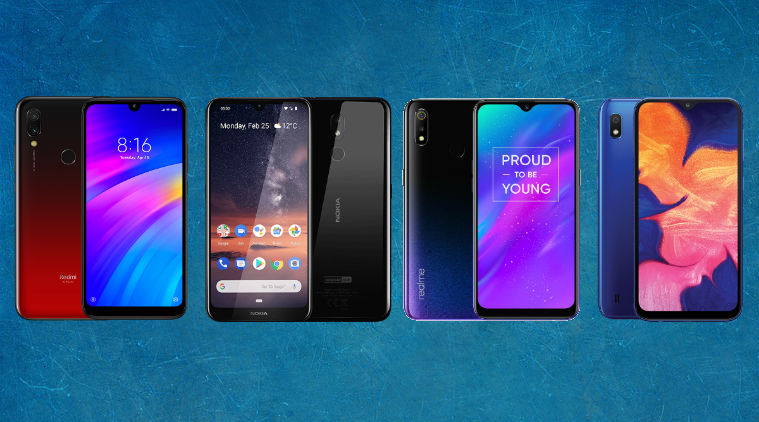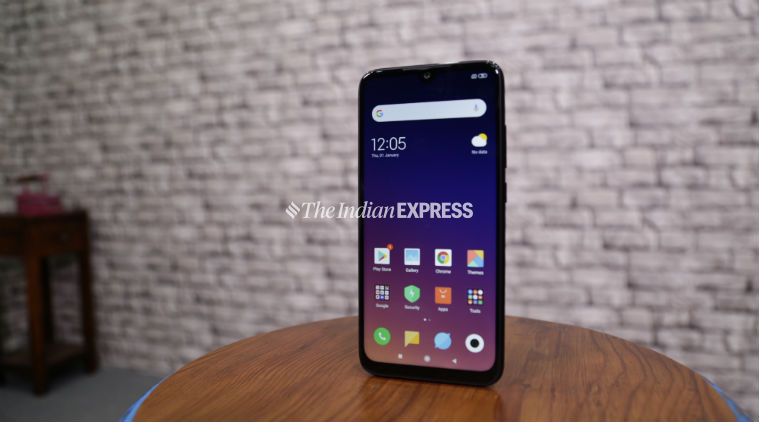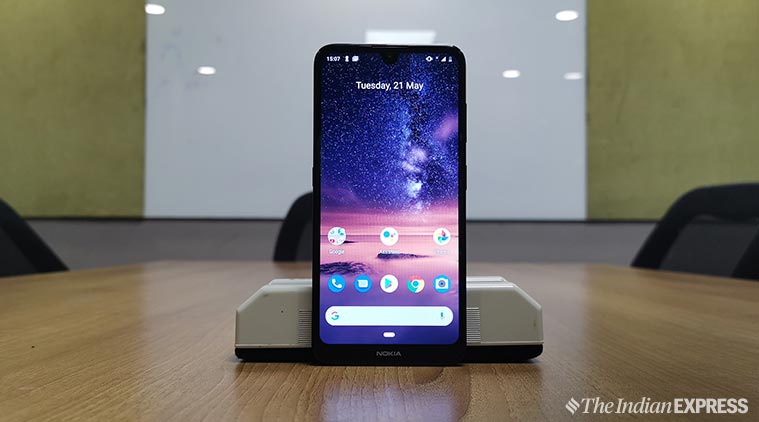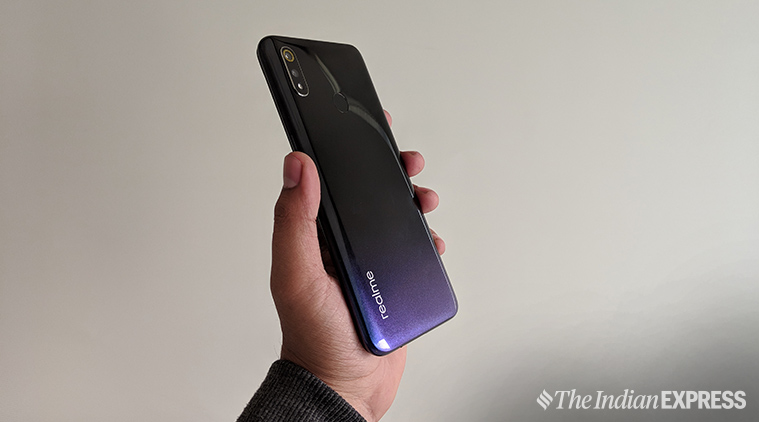© IE Online Media Services Pvt Ltd
Latest Comment
Post Comment
Read Comments
 Redmi 7 vs Nokia 3.2 vs Realme 3 vs Galaxy A10: A comparison of price and specifications
Redmi 7 vs Nokia 3.2 vs Realme 3 vs Galaxy A10: A comparison of price and specifications
Xiaomi has been leading the budget segment in India for quite some time now with its Redmi smartphones. However, the competition in the Indian budget smartphone market is tougher than ever with Realme launching its phones at the same price with almost similar specifications. Recently, Samsung joined the competition with its Galaxy A-series smartphones and Galaxy M-series smartphones.
The latest entry to join the competition in the budget segment is HMD Global. It launched Nokia 3.2 and Nokia 4.2 smartphones that are priced under Rs 10,000 and come with a premium design. We are comparing one smartphone each from Redmi, Realme, Samsung and Nokia to help users deciding which smartphone they should get. Here is a comparison among Xiaomi Redmi 7, Nokia 3.2, Realme 3, and Samsung Galaxy A10.
Galaxy A10 is the most affordable among the four smartphones with a starting price of Rs 7,990 for 2GB/32GB model. The Xiaomi Redmi 7 has a starting price of Rs 8,999 for 2GB/32GB model, Nokia 3.2 is priced at Rs 8,990 for 2GB/16GB, and the Realme 3 has a starting price of Rs 8,990 for the base model of 3GB/32GB.
Redmi 7 and Nokia 3.2 have a glass back design whereas the Realme 3 and Galaxy A10 have a plastic back design. Redmi 7 comes in gradient colour options and the Realme 3 has a 3D textured gradient back. Nokia 3.2 and Galaxy A10 go with a simple and clean design at the back.
 All the four phones have almost similar front design with a waterdrop-style notch on top.
All the four phones have almost similar front design with a waterdrop-style notch on top.
On the front all the phones have IPS LCD notched display with 1520×720 pixels resolution. Redmi 7 sports a 6.26-inch screen with Corning Gorilla Glass 5 protection, Nokia 3.2 features a 6.26-inch screen, Realme 3 has a 6.22-inch screen with Corning Gorilla Glass 3 protection, and Galaxy A10 sports a 6.2-inch screen.
Xiaomi Redmi 7 has the most powerful processor among the four devices. It is powered by Qualcomm Snapdragon 632 processor paired with Adreno 506 GPU and runs Android 9 Pie based MIUI 9 skin. The Realme 3 holds the second position with its Mediatek Helio P70 processor paired with Mali-G72 GPU. It runs ColorOS 6 based on Android 9 Pie.
 Nokia 3.2 runs the stock version of Android 9 Pie (Android One).
Nokia 3.2 runs the stock version of Android 9 Pie (Android One).
Samsung Galaxy A10 is powered by company’s own Exynos 7884 chipset paired with Mali-G71 GPU and runs Android 9 Pie with Samsung skin on top. The Nokia 3.2 is powered by Qualcomm Snapdragon 429 processor paired with Adreno 504 and it runs the stock version of Android 9 Pie (Android One).
The Realme 3 sports a dual rear camera setup carrying a 13MP primary sensor with f/1.8 aperture clubbed with a 2MP depth sensor, while the Xiaomi Redmi 7 sports a 12MP sensor with f/2.2 aperture clubbed with a 2MP depth sensor. Nokia 3.2 sports a single rear camera sensor of 13MP with f/2.2 aperture and the Galaxy A10 features a single 13MP sensor with f/1.9 at the back.
 Realme 3 sports a 13MP + 5MP dual rear camera setup and a 13MP front camera.
Realme 3 sports a 13MP + 5MP dual rear camera setup and a 13MP front camera.
Realme 3 has also the highest megapixel count selfie camera with a 13MP sensor (f/2.0) at the front. Redmi 7 sports an 8MP (f/2.0) selfie camera, Nokia 3.2 sports a 5MP (f/2.2) selfie camera and the Galaxy A10 sports a 5MP (f/2.0) sensor at the front.
The Realme 3 sports a 4,230mAh battery with 10W fast charging support, which is the biggest among the four smartphones. Redmi 7 and Nokia 3.2 sport a 4,000mAh battery with 10W fast charging support. The Galaxy A10 features a 3,400mAh battery.
Also read | Realme 3 Pro vs Redmi Note 7 Pro: Closer than you’d think
Except for the Samsung Galaxy A10, all the other phones have a rear-mounted fingerprint sensor. Redmi 7 sports an IR blaster which is absent in the other phones. All the four devices retain the 3.5mm headphone jack and sport a micro-USB 2.0 port.